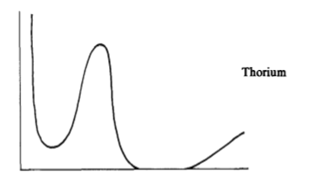Annus Mirabilis
Fear it is said “comes from the lack of knowledge and a state of ignorance.“
-Debasish Mridha
In 1897 J. J. Thomson discovered electrons and, in 1904, proposed a ‘plum pudding’ model, where electrons were negative charged particles (plumbs) embedded in a uniform sphere of positive charge (pudding).
Now I would like to consider events that transpired just days later, a little more than a year after the Wright Brother’s flight at Kitty Hawk NC. In America Theodore ‘Teddy’ Roosevelt, was inaugurated for his second term, moving further west over one hundred thousand would die in the Russo-Japanese war and (further west still) this would lead to the Russian Revolution. And even further west a young German born, Swiss patent inspector, all of 26 years of age would write four papers on physics, these papers would be of such astounding brilliance and insight that more than a century later we call these four 1905 papers the 'annus mirabilis papers' (miracle year papers).
The first paper received on March 18 and published June 9 proposed that light was made not of waves, but rather of a finite number of energy ‘quanta’. The third paper, received on June 30 and published September 26 reconciled a number of disparate issues in physics including Maxwell’s equations for electricity and magnetism with the laws of mechanics as well as resolving the results of the Michelson-Morley experiment which our young patent inspector may not have even known about when he wrote his paper. In the fourth paper, received September 27 and published November 21 our patent inspector found an equivalence between mass and energy.
And what of the second paper? It was received May 11 and published July 18, proved not only that atoms exist (up until then the notion of atoms had been considered theoretical at best) and established a means of determining the size of atoms.
If you haven’t figured it out yet, our Swiss Patent inspector who turned the entire world of physics upside down in one year with just four papers, was Albert Einstein. The first paper, on the Photoelectric effect would win him a Nobel Prize in 1921, his third paper on Special Relativity never did get a Nobel Prize and ultimately would not be proven until the late 1930s and his fourth paper contains a derivation of the equation E=mc2 But Einstein’s second paper is the one that matters to us right here and now, Einstein proved that an idea that was considered useful to physicists and chemists was not just useful theory but actual fact. Atoms are real and now we know how big they are, all thanks to the study of the movement of pollen grains in water.
Using the existence of the electron and knowing the size of atoms, the New Zealand born Ernest Rutherford directed a series of experiments conducted between 1908 and 1913 where Hans Geiger and Ernest Marsden fired a beam of alpha particles at a gold foil. Noticing that the occasional deflection of the alpha particles was significantly larger than anticipated Rutherford concluded that atoms were mostly empty space with a super dense positively charged ‘nucleus’ orbited by electrons.
By 1920 Scientists understood the mass of atoms was concentrated almost entirely in the nucleus, the nucleus was comprised of protons, and the number of protons in the nucleus determined the type of chemical, hydrogen, helium, and so on. Yet something was missing, for example, hydrogen has a single proton and was assigned a mass of 1, yet helium has two protons and a mass of 4. Conducting a number of experiments with Polonium and beryllium a number of scientists observed a bizarre radiation with tremendous ability to knock protons about yet no apparent charge.
In February of 1932 James Chadwick tentatively proposed the existence of a third subatomic particle in a paper entitled “The Possible Existence of a Neutron”, by May he far more confidently proposed “The Existence of a Neutron” in a new paper.
In 1933 Lord Ernest Rutherford called the idea of obtaining energy from nuclear reactions ‘moonshine’. A young Hungarian physicist Leo Szilard, upon reading Rutherford’s claim realised that if a chain reaction involving neutrons could be initiated a tremendous amount of energy could in fact be produced. Richard Rhodes described Szilard’s moment of inspiration in his 1986 Pulitzer Prize Winner ‘The Making of the Atomic Bomb’:
In London, where Southampton Row passes Russell Square, across from the British Museum in Bloomsbury, Leo Szilard waited irritably one gray Depression morning for the stoplight to change. A trace of rain had fallen during the night; Tuesday, September 12, 1933, dawned cool, humid and dull. Drizzling rain would begin again in early afternoon. When Szilard told the story later he never mentioned his destination that morning. He may have had none; he often walked to think. In any case another destination intervened. The stoplight changed to green. Szilard stepped off the curb. As he crossed the street time cracked open before him and he saw a way to the future, death into the world and all our woes, the shape of things to come.



Comments
Post a Comment